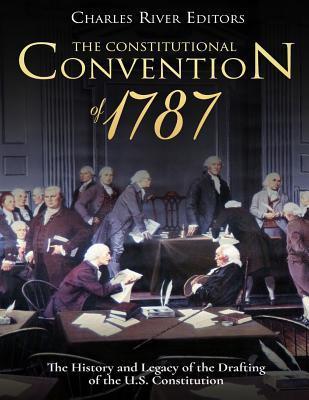The Constitutional Convention of 1787: The History and Legacy of the Drafting of the U.S. Constitution

The Constitutional Convention of 1787: The History and Legacy of the Drafting of the U.S. Constitution
*Includes contemporary accounts
*Includes online resources and a bibliography for further reading
"All communities divide themselves into the few and the many. The first are the rich and well born, the other the mass of the people. The voice of the people has been said to be the voice of God; and however generally this maxim has been quoted and believed, it is not true in fact. The people are turbulent and changing; they seldom judge or determine right. Give therefore to the first class a distinct, permanent share in the government. They will check the unsteadiness of the second, and as they cannot receive any advantage by a change, they therefore will ever maintain good government. Can a democratic assembly, who annually revolve in the mass of the people, be supposed steadily to pursue the public good? Nothing but a permanent body can check the imprudence of democracy. Their turbulent and uncontroling disposition requires checks." - Alexander Hamilton, quoted in Notes of the Secret Debates of the Federal Convention of 1787
By 1787, it became evident that the Articles of Confederation were inadequate for the new nation. With these problems hampering the national government under the Articles of Confederation and the threat of default on the nation's massive war debt looming, plans began being made to fix the problems of the Articles of Confederation. Thus, that summer a Constitutional convention was called, and each state sent delegates to Philadelphia. Among the delegates were prominent patriots and former members of the Continental Congress, including George Washington and Benjamin Franklin.
However, while most of the delegates came to Philadelphia virtually starting with nothing, Alexander Hamilton and James Madison arrived in Philadelphia well-prepared and well-studied. Hamilton had been a leader in calling for a Constitutional Convention to restructure the nation's government at the convention in Annapolis a year earlier. At that convention, Hamilton had been elected to draft a document describing the reasons for a stronger national government. The letter was sent to each of the 13 states, and it was instrumental in leading to the opening of the Constitutional Convention in 1787. Meanwhile, Madison had been brushing up on his political theory and actually prepared extensively for the Convention. Madison used his extensive knowledge of ancient and foreign languages to study Constitutions from across the world
PRP: 86.34 Lei
Acesta este Pretul Recomandat de Producator. Pretul de vanzare al produsului este afisat mai jos.
77.71Lei
77.71Lei
86.34 LeiLivrare in 2-4 saptamani
Descrierea produsului
*Includes contemporary accounts
*Includes online resources and a bibliography for further reading
"All communities divide themselves into the few and the many. The first are the rich and well born, the other the mass of the people. The voice of the people has been said to be the voice of God; and however generally this maxim has been quoted and believed, it is not true in fact. The people are turbulent and changing; they seldom judge or determine right. Give therefore to the first class a distinct, permanent share in the government. They will check the unsteadiness of the second, and as they cannot receive any advantage by a change, they therefore will ever maintain good government. Can a democratic assembly, who annually revolve in the mass of the people, be supposed steadily to pursue the public good? Nothing but a permanent body can check the imprudence of democracy. Their turbulent and uncontroling disposition requires checks." - Alexander Hamilton, quoted in Notes of the Secret Debates of the Federal Convention of 1787
By 1787, it became evident that the Articles of Confederation were inadequate for the new nation. With these problems hampering the national government under the Articles of Confederation and the threat of default on the nation's massive war debt looming, plans began being made to fix the problems of the Articles of Confederation. Thus, that summer a Constitutional convention was called, and each state sent delegates to Philadelphia. Among the delegates were prominent patriots and former members of the Continental Congress, including George Washington and Benjamin Franklin.
However, while most of the delegates came to Philadelphia virtually starting with nothing, Alexander Hamilton and James Madison arrived in Philadelphia well-prepared and well-studied. Hamilton had been a leader in calling for a Constitutional Convention to restructure the nation's government at the convention in Annapolis a year earlier. At that convention, Hamilton had been elected to draft a document describing the reasons for a stronger national government. The letter was sent to each of the 13 states, and it was instrumental in leading to the opening of the Constitutional Convention in 1787. Meanwhile, Madison had been brushing up on his political theory and actually prepared extensively for the Convention. Madison used his extensive knowledge of ancient and foreign languages to study Constitutions from across the world
Detaliile produsului








